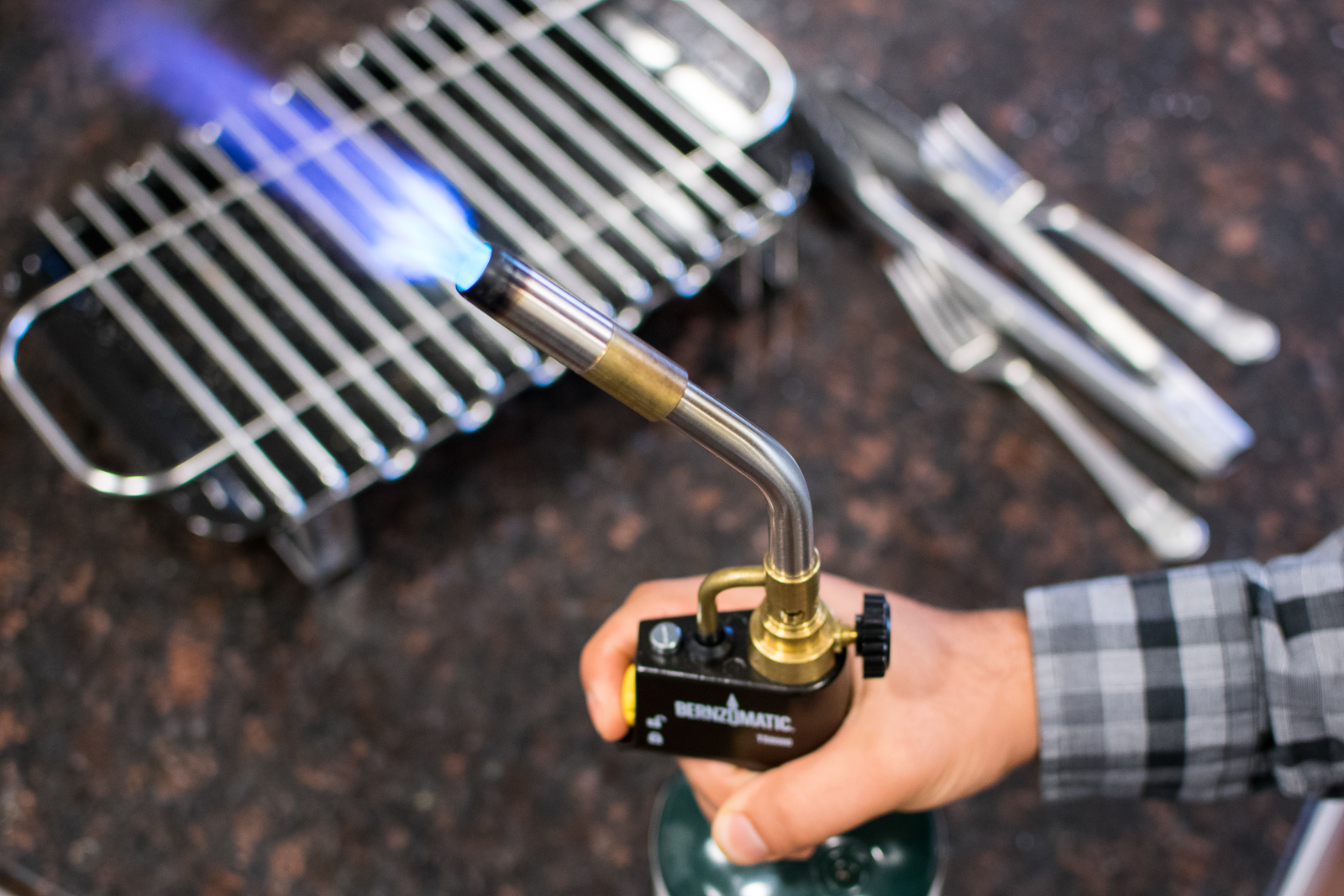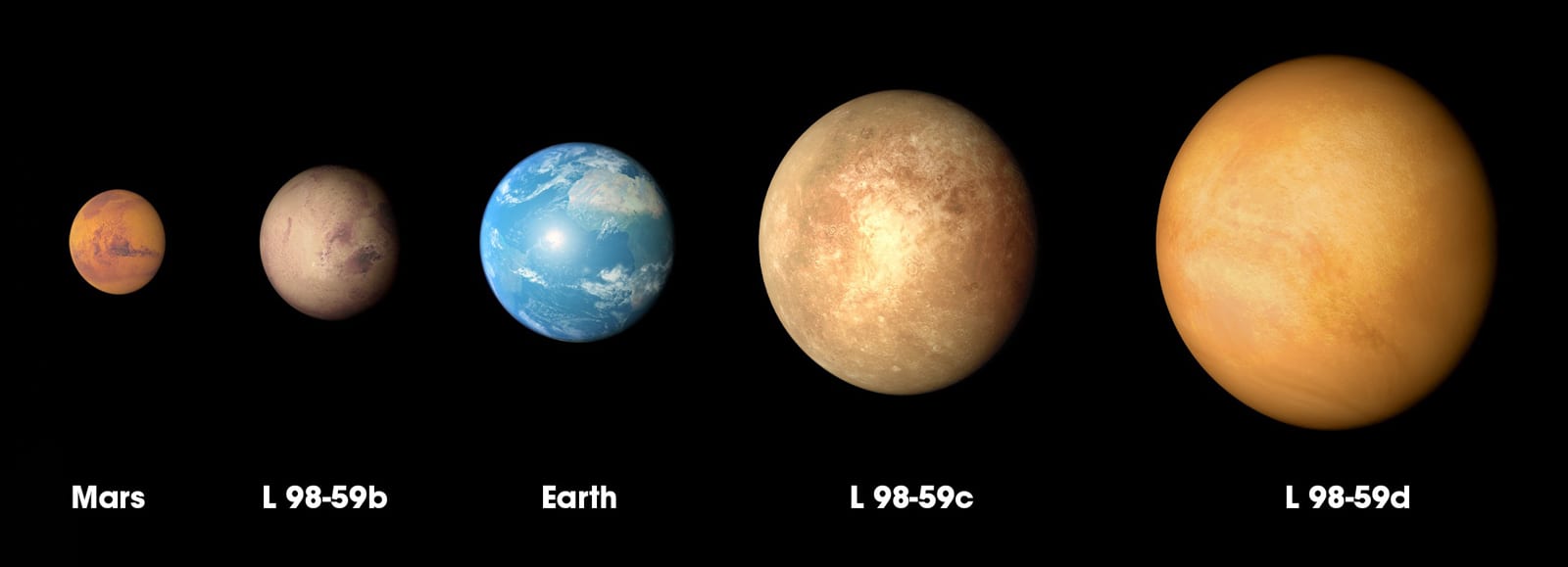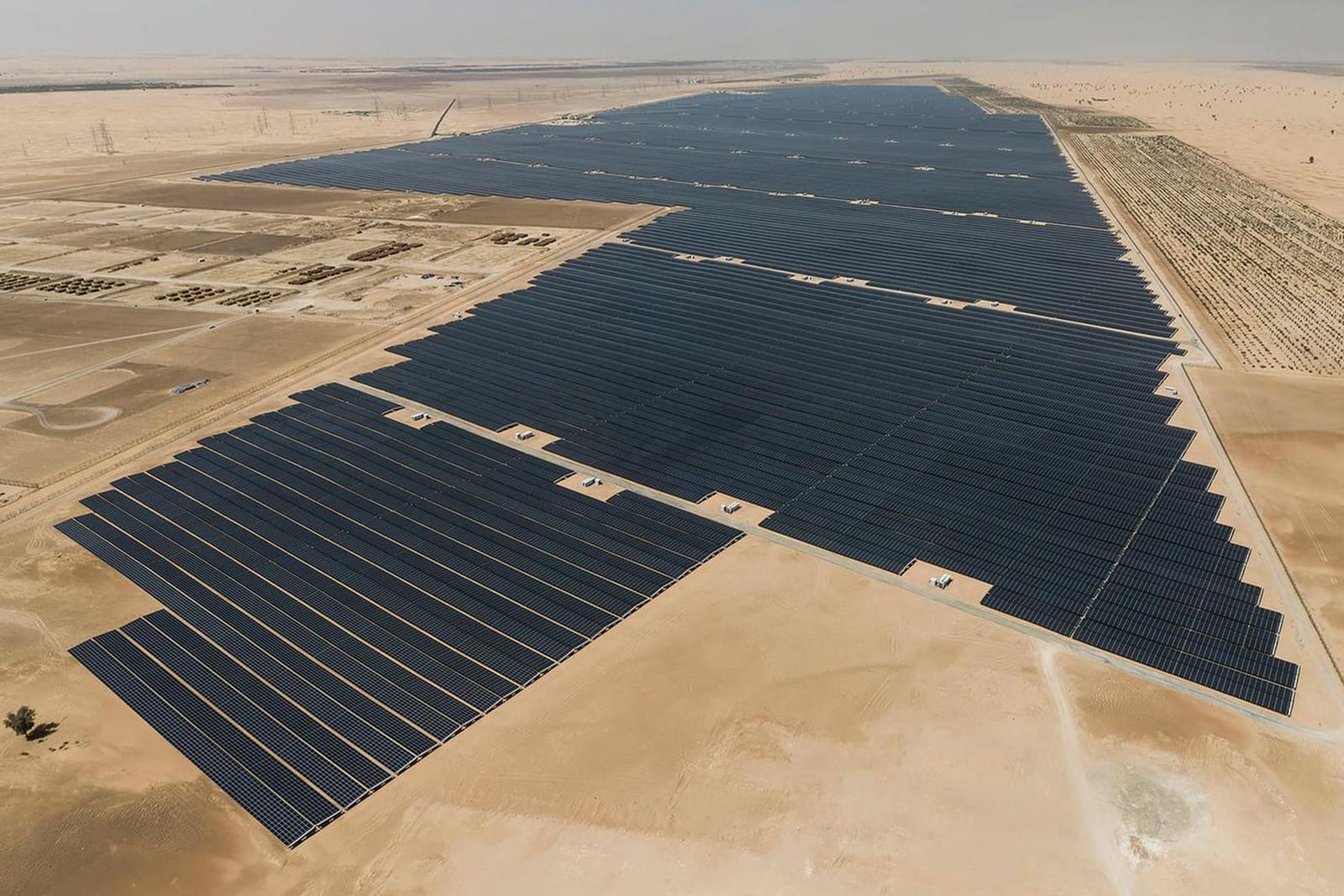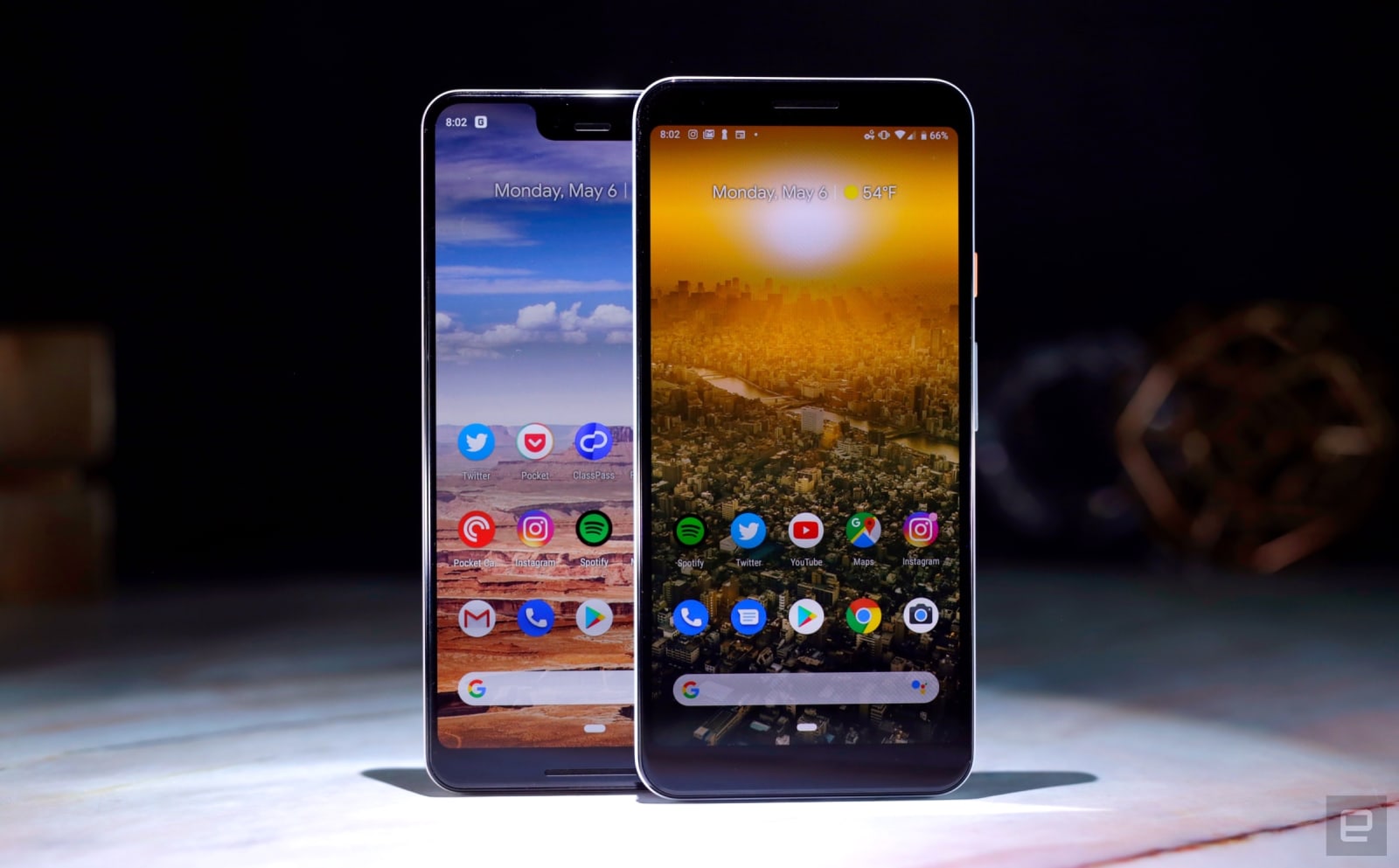
By Tim Barribeau and Nick Guy
This post was done in partnership with Wirecutter. When readers choose to buy Wirecutter's independently chosen editorial picks, Wirecutter and Engadget may earn affiliate commission. Read the full guide to sous vide machine and gear.
After testing dozens of sous vide cookers over the past six years, we think the Anova Precision Cooker Nano is the best immersion circulator for home cooks. It's the smallest, most affordable model from a company that's consistently made some of the best-performing cookers we've tested. And its precise temperature control and quick heating are on a par with that of much more expensive machines.
The Anova Nano's Bluetooth connection allows you to set and control the cooker from your phone, and use Anova's app to set the time and temperature from preset recipes onto the circulator. The cooker also has controls on it though, meaning you don't need to use your phone if you'd prefer not to. Like just about every sous vide circulator we've tested, the Anova cooker is accurate enough for even the most exacting of cooking techniques. This is crucial because even minor variations can foil your attempt at perfectly runny egg yolks with just-set whites.
The ChefSteps Joule relies exclusively on a smartphone for all controls adjustments; it doesn't have onboard controls. If you're okay with that, this cooker is in many ways equal or superior to the Anova Precision Cooker Nano. It's physically smaller, it's just as accurate, it heats water faster, and it can cook with less water in a pot thanks to a magnetic base and a unique pump system. We love the app, which works over either Wi-Fi or Bluetooth.
Monoprice's Strata Home Sous Vide Immersion Cooker 800W is louder than other cookers we tested, but it is inexpensive and reliable, making it a great entry-level option for someone just getting started with sous vide cooking. It's not as advanced as the circulators from Anova or ChefSteps, because it lacks any sort of wireless connection. But in our tests, it got to temperature quickly and held the setting properly. At around $70, its typical street price is less than half that of our other picks.
Sous vide cooking is only the first step when it comes to meat. After you've cooked the protein through, searing creates a delicious, crispy brown exterior. Although you can finish your food in a pan, we found Bernzomatic's TS8000 to be the fastest tool for searing. It attaches to a standard camping propane tank and is easy to use.
Why you should trust us
We've been reviewing and recommending sous vide devices for the home since 2012. Our long-term testing has given us a look at how the technologies have changed over this period—and it also has helped us figure out what's important and what isn't.
Nick Guy has been interested in the intersection of food and tech since middle school, when Emeril Live was appointment viewing for him. He has been cooking sous vide since November 2014, when he first got his hands on the Anova Precision Cooker (if you don't count his pretty successful attempts with hot water and a cooler!).
Tim Barribeau has written for Wirecutter since 2012, covering both gadgetry and cooking tools. In that time he has interviewed James Beard Award–winning authors and chefs, performed blind taste tests with Japanese chefs, and persuaded ice cream parlors to spend hours slinging ice cream with different sizes and shapes of scoops. He also makes a mean sous vide salmon.
Who this is for
A home sous vide cooker is mostly for food lovers and experimental cookers. It's for people who love cooking and playing around with new recipes and techniques, and are willing to wait for hours for food to finish cooking. Over the past few years, sous vide cooking has blossomed into the public consciousness. Thanks to the technique's prevalence in the kitchens of high-end restaurants as well as a glut of demystifying literature, demand for home-use sous vide circulators has soared, and many inventors have been using Kickstarter to fund the creation of affordable machines.
Now a mainstay of cooking shows and Internet discussions, sous vide involves using a tool, such as the immersion circulators we tested here, to heat water and keep it at a set temperature. Then you seal your food—ideally within a vacuum—and immerse it in the hot water for hours at a time until the entire thing reaches a uniform temperature. The result? Steak that's a perfect medium rare throughout (no cold, raw centers or overcooked outsides), chicken so tender that you don't even need a knife, and eggs the consistency of custard. That's what sous vide can do. And for the most part, making that happen is easy.
The best of these devices are very simple to use and allow you to expand the margin of error in creating the perfect piece of food. They're like a more controllable version of slow cookers, and they can give you some pretty interesting food outcomes thanks to their accuracy.
Over the past few years, sous vide technology has come into its own, and the price has dropped significantly. If you've been curious about the technology, now is the perfect time to give it a try. Thanks to recent interest and competition, sous vide devices are now more affordable and easy to use.
How we picked and tested

Cooking eggs sous vide. Photo: Sarah Kobos
You can find three main types of sous vide cooker: the immersion circulator that can simultaneously heat and circulate water, the all-in-one but less precise water bath, and the bring-your-own-heat controller. For most people in most situations, the immersion circulator is the perfect sous vide cooker. This style latches onto the side of a vessel—be it a pot, a plastic tub, or even a cooler—and not only heats the water but also uses an impeller to circulate it around the container, ensuring that the temperature is more even throughout the entire vessel. Immersion circulators also tend to be smaller than some of the alternatives, priced decently, and easy to use.
When you're shopping for a sous vide cooker, you have four traits to look for:
- Accuracy: With some food, eggs in particular, a temperature variance of just 1 degree Fahrenheit can mean a radically different final product. So you need a sous vide cooker that is accurate enough to do what you want—and all of the water has to be at that same temperature. No hot or cold spots.
- Speed: You don't want to wait for hours for the cooker to bring the container of water up to temperature. You need a powerful heating element that can rapidly warm a large volume of water and keep it warm as you cook.
- Price: Because these are enthusiast gadgets right now, we're a bit less exacting on the price front, but some $100 options are just as good as $500 ones, and we know you want to save money where you can.
- Fits a wide range of containers: The best sous vide cookers don't require dedicated counter space and can work with multiple sizes and shapes of vessels.
- Remote and onboard controls: Because almost all of the top contenders now connect to smartphones over Wi-Fi or Bluetooth, that's another feature we consider important these days. Even so, we still prefer devices that also have onboard controls and don't require a second device.
- Temperature stability: This matters, but is less important than some people might think. Generally, low-and-slow foods can handle a little more variation than things that you need to cook quickly, but you still want your cooking to stay on target. For foods that cook more quickly, like eggs, stable temperatures are more important.
- Built-in timer: Not every sous vide circulator has a timer built in, but for us, it's a useful feature. The count-up (just showing the cooking time) and countdown (with an alarm when done) types are both handy for keeping track of how a cook is going, but the ones that shut down after a specific time are less so, as they can allow food to drop to a temperature where bacterial growth becomes a problem.
A more powerful heater warms water faster and rebounds from the addition of cold food more quickly, but it isn't any more efficient in the long run, and it is more likely to flip a breaker in your kitchen. Power versus utility is a balancing act—but keep in mind that you can always give a lower-wattage circulator a boost with some hot water from a kettle. Right now, most of the circulators operate at around 1,000 to 1,100 watts (about the same as a full-size microwave) or 750 to 800 watts (about the same as a mini microwave). This isn't a serious drawback, but it is something to take into account if you know that the breaker for your kitchen gets flipped easily.
We took a bunch of other factors into account, too. How does the cooker attach? How precise does the water level have to be? How big is the machine? How big of a container does it need? How loud is it? Is it easy to use? Does it have audible alarms to indicate when it's at temperature? These things can separate the great sous vide machines from the good.

The immersion circulators we tested in 2016. Photo: Nick Guy
With each sous vide cooker, we heated 1½ gallons of water—enough to fill a stockpot—from 69 to 135 degrees Fahrenheit (the temperature for steak cooked to medium), measuring the temperature at both points with the ThermoWorks Thermapen Mk4 (an accurate instant-read thermometer) and recording the time to get to temp. We covered the pot with foil to prevent evaporation, and we continued to let the circulators run for 12 hours—a longer time than your average recipe, but a good indicator, we felt, of the machine's ability to hold a set temperature indefinitely.
|
Measurement
|
Anova Nano
|
ChefSteps Joule (Steel)
|
ChefSteps Joule (White)
|
Monoprice Strata
|
Anova Wi-Fi
|
|
Starting temp (°F)
|
69
|
69
|
69
|
69
|
69
|
|
Circulator display temp
|
69.1
|
69
|
68.8
|
69.1
|
69
|
|
Time to reach 135 °F
|
21 minutes
|
15 minutes
|
14 minutes
|
20 minutes
|
20 minutes
|
|
Thermometer read temp
|
135
|
135
|
135
|
135
|
135
|
|
Circulator display of temp
|
135
|
135
|
135.4
|
134.8
|
135
|
|
kWh at temp
|
0.23
|
0.24
|
0.25
|
0.25
|
0.26
|
|
kWh after 1 hour
|
0.27
|
0.25
|
0.28
|
0.31
|
0.32
|
|
kWh after 12 hours
|
0.78
|
0.44
|
0.65
|
1.12
|
1.07
|
|
Ambient sound (dB)
|
38
|
38
|
36.3*
|
36.3*
|
38
|
|
Sound at unit
|
49
|
45
|
53.5*
|
61.9*
|
52
|
|
Sound at 12 inches
|
42
|
40
|
40.1*
|
50.3*
|
45
|
The results of our most recent tests (* indicates results from a previous test).
Our pick: Anova Precision Cooker Nano

Photo: Sarah Kobos
The Anova Precision Cooker Nano is the best bet for most home cooks due to its accuracy, low price, relatively small size, and flexibility. It's one of the cheapest ways to get into sous vide cooking, and it works with a huge range of containers, meaning you probably don't need to buy any new hardware. The Anova Nano has an intuitive touchscreen interface. It also offers a beep alert when water has come to temperature, it has circuit-saving lower wattage, and is quieter than much of the competition.
About the height of a wine bottle but even skinnier, the Anova Nano is smaller than pretty much anything else available, including the older Anova models, by about half; the ChefSteps Joule is the only exception. The 750-watt heating element in the Anova Nano is low enough that it shouldn't trip any breakers in your kitchen, but was able to get water up to temperature in the same amount of time as the larger, 900-watt Anova Precision Cooker Wi-Fi (our previous top pick). And once the water was there, it stayed there, even over long cooks. Anova promises temperature variance of +/- 0.2 °F. We tested to the whole degree, which is accurate enough for any home sous vide cooking, but Anova's cookers have been consistently accurate in our past testing.

The Anova Nano's touchscreen is responsive and easy to use. Photo: Sarah Kobos
The Anova Nano has a simple touchscreen interface that's even easier to use than the Anova Precision Cooker Wi-Fi's scroll wheel. Three on-screen buttons allow you to toggle between the current temperature, the target temperature, and a timer, with the data displayed in big numbers below. You can use the "+" and "-" buttons to toggle these figures up and down, and a big play button between them starts the cook.
The Anova Nano is very quiet. When we tested it in a quiet room (ambient level of 38 decibels) and used a digital sound level meter to measure volume, the Anova Nano produced about 49 dB when we measured right against the circulator itself; the result dropped to just 42 dB, about the level of the background noise in a larger room, when we measured it from a foot away. The noise is higher pitched than that of the Anova Precision Cooker Wi-Fi, but quieter. Only the Joule was quieter in our testing.
In contrast to the Monoprice Strata, the Anova Nano alerts you when it comes to temperature, so you don't have to hang around the kitchen waiting for it. The Anova cooker beeps when it's just under the desired heat level, so the temp should be just right by the time you get yourself over to the kitchen.

Choosing and setting a recipe in the Anova Culinary app is easy. Photo: Courtesy of Anova Culinary
The Bluetooth pairing process is painless, handled through the Anova app (iOS or Android). Once the unit is paired, you can set the temperature and timer from your phone, or use the preset recipes in the app to send over that data with one press. This means that instead of having to take the separate steps of finding the recipe for what you're cooking, and then manually entering it on the Anova Nano's touchscreen, you can just find the cooking instructions and press a button to get it started.
The app works well, and Anova adds more content on a fairly regular basis. Currently you can find cooking guides from J. Kenji López-Alt of Serious Eats, plus specific recipes from a variety of chefs. Some recipes let you choose the meat's thickness and doneness when calculating the time and temperature, while others just give you a set number. You can, of course, manually set these figures instead.
Anova warranties its sous vide cookers for two years, and offers a 100-day money-back guarantee.
Flaws but not dealbreakers
The relatively low price of the Anova Nano comes at the cost of some functionality. Most obviously, the 750-watt heater takes longer to warm water than some of the more powerful models. Bringing a 1½-gallon vessel from 69 °F to 135 °F took 21 minutes, compared with 15 minutes for the ChefSteps Joule, although it wasn't any slower than the larger Anova Precision Cooker Wi-Fi. You can always give the heater a bit of a boost by using hot water from your kettle to preheat the bath.
The Anova Nano has a smaller maximum clamp opening than the Anova Precision Cooker Wi-Fi (0.7 inches vs. 1.25 inches), but it's still wide enough that it'll fit most common kitchen vessels. Because that clamp doesn't slide up or down like it does on the other Anova model, you have a little less flexibility in the depth of the water or container you can use. Also, the Anova Nano goes up to only 197 °F, compared with above 200 °F for some other models we tested, but the only thing we know of that requires temperatures that high is decarbing weed, which you can do at 203 °F.
Because it has a less powerful motor, the Anova Nano can only circulate up to five gallons of water, compared with 10 for the Joule. Though that's a big difference, five gallons is a lot of water, and it's unlikely that most home cooks will use that much. The Nano also requires a minimum of 5 inches of water (though you'll need different amounts of water depending on what vessel you're using, and taller vessels will need more), which again, sounds like a lot compared with the Joule's 1½ inches, but you'll usually need about 5 inches to cover what you're cooking anyways.
The lack of Wi-Fi might be a problem if you plan on starting cooks from outside of your kitchen in a big house, but for most people who are simply using the app to set the temperature while next to the unit, it won't be a big deal.
Runner-up: ChefSteps Joule

Photo: Sarah Kobos
The ChefSteps Joule outperforms the Anova Precision Cooker Nano in a lot of ways, including a smaller body and faster heating times. But ChefSteps's more expensive circulator lacks physical controls, meaning it doesn't work without your phone. For all of the great things it has going for it, that lack of buttons is a big enough omission that we can't recommend it as our top pick.
The most obvious advantage of the Joule is its size. At 11 inches long and 1.85 inches in diameter, it's about 60 percent the volume of the Anova Nano unit and about half the weight, at only 1.28 pounds. This thing is impressively tiny—it can easily fit in pretty much any utensil drawer, whereas the Anova is too large to fit in most.
The Joule is also more powerful, with a 1,110 W heating element. In our tests, it heated water a full six minutes faster than the Anova Nano, raising the temperature from 69 °F to 135 °F in only 15 minutes. And despite the higher wattage, it used less power over time: In 12 hours, the Joule drew only 0.44 kWh, compared with the Precision Cooker Nano's 0.78 kWh. Based on the US Energy Information Administration's August 2016 national average of the price of electricity, that's a cost of less than 6¢.
Another way the Joule preserves resources is by requiring less water. The Anova Nano needs at least 5 inches of water in which to operate, while the Joule needs only 1½ inches. The Joule pulls in water through an opening just above the base, heats it, and then spits it out through an oval-shaped opening that doesn't have to be submerged. The device also has a magnetic foot that lets it stick to the bottom of some pots and other vessels. We were able to use a Dutch oven for sous vide cooking with the Joule, which would have been difficult with the Anova Nano because of the shape of the pot's curves and its relatively short walls. The Joule just stuck right to the bottom, and we were ready to go.
The ChefSteps model is just as quiet as the Anova Nano cooker when the output spout is totally submerged, measuring 52.7 dB at the cooker and 44.3 dB a foot away. When the opening isn't underwater, it sounds like a fountain that might be used for white noise, and is noticeably louder at 73.2 dB up close and 61.6 dB from a foot away.

The Joule (right) is smaller than the Anova Nano, but both are much smaller than previous-generation sous vide cookers. Photo: Sarah Kobos
ChefSteps's app experience (iOS and Android) is particularly great. Pairing with the Joule is no issue, and once you're connected, cooking is a breeze. As of this writing, the app offers dozens of preset recipes, organized by food type. When you choose the kind of meat, the app asks to what temperature you'd like it to cook (with full-screen videos in the background showing the doneness), after which it asks you to indicate whether the protein is fresh or frozen, and how thick it is. From there it calculates how long to cook, and it starts heating the water when you're ready. The experience is similar for eggs and vegetables. Of course, you can also set the temperature and time manually yourself. And ChefSteps offers an Amazon Alexa skill that allows you to control your Joule with an Echo or another Alexa-enabled device.
The downside to the app is that it's the only way to control the Joule. Other than the top cap, which you can use to stop the cooking, the Joule has no buttons or displays. With the Anova Nano, you can use the touchscreen to set your desired temperature and hit the start button. With the Joule, you must pull out your phone or tablet and set everything from there. This is the single reason the ChefSteps Joule isn't our top recommendation. We know that for many people, the app-based control scheme will be just fine, but for others it's a dealbreaker. A version of the Joule with onboard controls, if ChefSteps were to make one, might just be the perfect sous vide machine.
In an October 2016 review of the Joule for Serious Eats, J. Kenji López-Alt calls it "the new standard on the market." He writes that the magnetic foot is "an ingeniously simple solution to what was previously a perennial problem," and says that he found the small size the handiest of all the features. The lack of hardware controls is his biggest reservation. Ultimately, we agree with his conclusion, in which he finds "the Anova and the Joule [to be] equally attractive tools designed for slightly different audiences." He continues, "Choose whichever one suits your needs best—you can't really go wrong."
ChefSteps offers two versions of the Joule: the original with a stainless steel cap and foot, and a less expensive model that uses polycarbonate on those components, as on the rest of the body. We tested both, and they're functionally identical, so we recommend going with the less expensive version unless you love the look of the steel.
Budget pick: Monoprice Strata Home Sous Vide Immersion Cooker 800W

Photo: Michael Hession
If you're just getting into sous vide cooking and you're not sure if you'll take to it, or if you're looking for an inexpensive gift for someone who loves to cook, Monoprice's Strata Home Sous Vide Immersion Cooker 800W is the best option. You have to give up some features and design elements for the lower price, but the Monoprice circulator does what it's supposed to: This cooker gets water hot and keeps it there.
The Monoprice cooker looks similar to older Anova models, including its adjustable clip and wheel for setting the temperature and timer. For its budget price, you give up any sort of wireless connection; you control everything on the unit itself. In our tests this model took 20 minutes to bring the water to temperature, about the same as the Anova Nano (but five minutes more than the Joule), and its temperature was accurate when we measured the water with a thermometer. The Monoprice cooker beeped right before reaching its set temperature. We don't like how loud this circulator was in our tests, reaching 50.3 decibels from a foot away, but can accept it for the price.
The best searing torch

Our torch pick produces a big, hot flame. Photo: Kevin Purdy
Cooking your meat sous vide gets you only halfway. The water bath brings the protein up to the proper temperature but leaves the outside the same color as the inside, without any of the tasty and texturally pleasing outer crust you'd get from other cooking methods.
We tested four torches along with the skillet method by cooking five New York strip steaks to medium-rare using the ChefSteps Joule. We then dried them off—burning off extra moisture slows down browning—added salt and pepper, and got to searing. Three Wirecutter writers then tested the steaks, focusing on the taste of the steak and its cook level while ignoring the actual service temperature (because we had to cook five steaks, some of them were colder than others when we sat down to eat).

Photo: Kevin Purdy
We tested five searing methods and found that the best searing tool for most home cooks is the Bernzomatic TS8000, paired with a small propane tank. It seared our New York strip steaks faster than most other methods (in about a minute and a half), and it didn't leave any off tastes from the gas. It's less expensive than most of the competition, too. In our tests, the high-powered flame made quick and easy work of the process. The TS8000 also has a flame-control adjuster.
Most of the searing methods produced similar-tasting results; the differences came down mostly to price. Sansaire's Searing Kit was the most expensive of the bunch. Though it came with a propane tank, a searing rack, and a drip tray, in addition to the torch head, we didn't see superior results in comparison with the TS8000. Sansaire has since shut down.
We also tried what is perhaps the most well-known searing device, Booker and Dax's Searzall. It's not a standalone torch, but rather a cone-shaped attachment for the TS8000. Two layers of wire mesh at the end help spread out the flame, so you can cook more surface at once. It also slows down searing: In our tests, browning time doubled with the Searzall. We liked the results, but not enough to justify the extra cost. Because it's an add-on to the TS8000, we suggest starting with the torch by itself and upgrading only if you're looking to take your searing to the next level.
We had to disqualify one of the torches almost immediately. The Bernzomatic ST2200T is not intended for searing, but we wanted to give it a try. Unfortunately, once we got going, it was very clear that this torch, which may be okay for soldering or even brûléeing, simply isn't powerful enough to sear meat. After three minutes and almost zero browning, we gave up on this one.
The easiest, least costly searing method produced poor results in our tests. We seared one of the steaks in a ripping-hot cast-iron skillet with canola oil. (Normally, we'd add butter for flavor, but we were attempting to control for taste, and canola oil is considered neutral.) After a minute and a half, as most recipes suggest, our steak was still not yet crusty. By the time we reached a nice browning—after four and a half minutes—the steak was overdone, with a large gray ring underneath the crust that detracted from our perfect medium-rare doneness. For many people this method may still be fine, especially if you're just getting started with sous vide and aren't ready to invest in extra tools for better results. The biggest drawback is that pan searing is a smoky process—you'll want to open any windows you can, turn on your range hood if you have one, and warn your family that you are not, in fact, burning the kitchen down.
How to seal bags
As mentioned above, in order to cook with a sous vide machine, you need to put your food in a bag and eliminate all of the air around it. Some people swear that you need a vacuum sealer to do this, but you also have a free way of doing it with a simple Ziploc bag that'll work just as well in most situations.
Here's how it works: Put the food in the pouch and almost completely seal it, with just a small section remaining open. Immerse the pouch in a bucket of water, leaving the opening just above the water line. Allow the air to escape, slowly pushing the entire thing under, and then seal it just before you submerge the opening. You can see more discussion of how to do this here and here. In some cases, this method is even preferable to vacuum sealing. For example, the vacuum sealer can compress the meat in your burger, leaving you with less of a burger and more of a meat brick. However, your food might take on a little water while cooking with this method. We ran a test by cooking something with no water in it (a couple of small containers filled with rocks for weight) in a Hefty freezer bag over the course of 12 hours. It took on 38 milliliters of water—not a huge amount, but if you're worried, you can double-bag. In reality, if your bags seem to take on a lot of liquid while cooking, it's most likely coming from inside the food.
If this seems like too much trouble, you should consider getting a vacuum sealer. After spending 50 hours sealing countless pork chops, ground beef, nuts, crackers, and chips, we think the Nesco American Harvest VS-12 Vacuum Sealer is the best vacuum sealer for most home cooks. It has all of the features we look for in a great vacuum sealer: powerful suction, several useful control options, an accessory port (for using attachments to seal jars or marinate meat), and the ability to create a single or double seal on bags. Plus, the lid is easy to lock in place, so you know you'll get a secure suction every time. The Nesco comes with two starter bag rolls in the box, one measuring 8.7 inches by 9.85 feet and the other 11 inches by 9.85 feet. You can purchase more bags through the company's website, or use FoodSaver bags, which you can buy on Amazon or at most big-box stores.
How to get started cooking sous vide
Because sous vide cooking in the home has been so heavily driven by innovative people putting things together piecemeal and experimenting in their kitchens, you can find a lot of fantastic recipes online. But if you want the best technical breakdown of sous vide cooking that's available at no cost online, Douglas Baldwin's excellent A Practical Guide to Sous Vide Cooking is your best bet. It's a fantastic look at the science of sous vide, offering details about proper handling, cooking times, and various other techniques. If you're interested in diving deeper into the science of cooking and other advanced techniques, Modernist Cuisine: The Art and Science of Cooking and Modernist Cuisine at Home are two bibles. They're expensive but immaculately researched (and gorgeously photographed).
It's also worthwhile to check out Serious Eats's Sous-Vide 101 recipe series (and more), as well as the recipes from the people behind the SousVide Supreme (which are just as applicable to other machines), Tender recipes, or—if you're into the no-carbs thing—the Nom Nom Paleo sous vide recipe sets.
The competition
Anova's Precision Cooker Pro is the company's high-end sous vide machine, designed for career chefs. The 1,200-watt circulator can keep up to 100 liters of water at a set temperature, cook for up to 10,000 hours (416 days!), and is advertised as being accurate to within 0.09 degree Fahrenheit. But for day-to-day home use, it doesn't offer any notable advantages. It took 14 minutes to get from 69 to 135 degrees (the same as the Joule), didn't use any less power than our favorite cookers, and wasn't any quieter. For specific, advanced cooking needs, it may be worth the high price, but for most people we recommend spending 75 percent less and choosing the Precision Cooker Nano instead.
Anova's Precision Cooker Wi-Fi is the company's more advanced model, with a Wi-Fi connection and 900 watts of power. It's larger than the Anova Nano though, and more expensive. However, it has some advantages, such as the adjustable clamp that can slide up and down the cooker's body to best fit your vessel, a higher maximum temperature, and needing only half the depth of water. Each of these features is rather niche, though, and don't necessarily justify the higher price.
The company's Precision Cooker Bluetooth has the same design as the Wi-Fi model, but is being phased out in place of the Anova Nano. If you're okay with its larger size, this model works well, and you might be able to find a great deal on it.
Kitchen Gizmo's Simplified Sous Vide Immersion Circulator was our previous budget pick. It heated the water and held the temperature properly in our tests, and was whisper quiet. But it's more expensive than our current budget pick, without any additional features.
The Gourmia GSV140 Digital Immersion Sous Vide Pod has an appealing price—comparable with that of our budget pick Monoprice model—but the device has too many faults for us to recommend it. Before you even use it, you can clearly see that the design is not well-thought-out. The clip is nowhere as accommodating as those on Anova's cookers. We used the GSV140 with the same stockpot we used with the rest of the tested cookers, and the height of the nonadjustable clip prevented it from gripping sturdily. The power cord comes out of the front of the circulator, getting in the way. Also, in our tests the display's temperature was consistently a degree or two low compared with our thermometer, and the GSV140 was one of the loudest units we tested, at 70.5 dB. We found the only redeeming factor to be the fast heating times: The GSV140 is a 1,200-watt cooker, and it brought water to temp in 13 minutes, the fastest of any sous vide unit we've ever tested.
The Gourmia GSV150B Immersion Sous Vide Pod with WiFi comes at a slight price premium over the GSV140. It's just as powerful, the design is a little more thoughtful, and it has a Wi-Fi connection, something the less expensive model lacks. Unfortunately, the more expensive version is just as problematic, if not more so. During our 12-hour cook test, the circulator got up to 134 °F, rather than the 135 °F we set it to. The display and thermometer both showed the lower temperature, while the setting indicator in the top right of the display continued to indicate 135 °F. That might be excusable if it weren't for the cooker's volume: The GSV150B started out pretty loud at the beginning of our cook, measuring about 65 dB. It got progressively louder as time progressed, rising to 81.2 dB by the end of the 12 hours. That's comparable with the noise from a garbage disposal. The sound was maddening, and we almost ended the test early because of it.
The VacMaster SV1 Immersion Circulator was both the largest circulator we tested and the most expensive. Although it got to the set temperature fast (after only 15 minutes, thanks to a 1,500 W heater that could potentially trip circuits), it had a few serious drawbacks, including inconsistent temperature, difficult-to-use buttons, and an annoyingly shrill alarm.
We decided to test the Gourmia GSV130 Digital Sous Vide Pod largely because of its low price and strong Amazon ranking. Oddly, despite promises of "precision temperature settings within +/- 0.01°," it allowed only 2-degree increments in Fahrenheit (when set to Celsius, it allows single-degree adjustments). We confirmed with the company that this operation is expected. Additionally, the unit has no alarm to let you know when it reaches the desired temperature, and it's nowhere near as container-agnostic as better cookers. We've also seen enough reports on Amazon of units dying that its low price isn't enough to save it.
The Nomiku WiFi Sous Vide 1100 Watt Immersion Circulator allows you to control the timer and temperature from anywhere using an app. It's not as easy to use as other circulators, though. For starters, the Wi-Fi login process is a pain. To enter your password, you must turn the jog wheel around the perimeter of the device's face, going through each character on lowercase, uppercase, and numeric keyboards and hitting Select once you reach the desired character. If you make a mistake, you have to scroll all the way back to the beginning to hit the delete button; that's also where the submit option is. This process should have to happen only once, but it's still a pain. Overall, we found the cooker's navigation more complex than necessary and less intuitive than we'd like. Small bugs, such as the app's failure to adjust from Celsius to Fahrenheit when we made the change on the circulator, also kept this model out of the top spot. The easy-to-use and strong clip is a nice touch, though.
PolyScience's Sous Vide Professional Creative Series is built like a tank and extremely accurate. However, it isn't intuitive to use—it's huge and heavy. It can't calibrate the temperature, and it doesn't really offer anything that you can't get from a model that's half its price.
After looking forward to its release for almost three years (it finally started shipping in late 2017), we've decided not to test the Mellow countertop sous vide. Controlled via smartphone, and boasting a neat built-in refrigeration feature, the Mellow piqued our interest. But it costs several hundred dollars, which is more than we think most people need to spend on a sous vide. Plus, other sites that have tested it (like CNET) found that the app isn't all that easy to use, especially when cooking your own recipes, and the size of the food container is too small.
This guide may have been updated by Wirecutter. To see the current recommendation, please go here.
When readers choose to buy Wirecutter's independently chosen editorial picks, Wirecutter and Engadget may earn affiliate commissions.
via
engadget.com




































